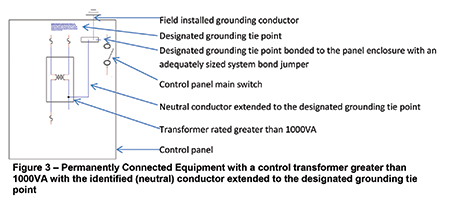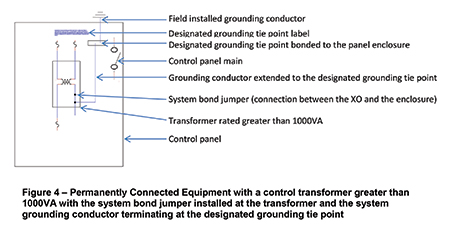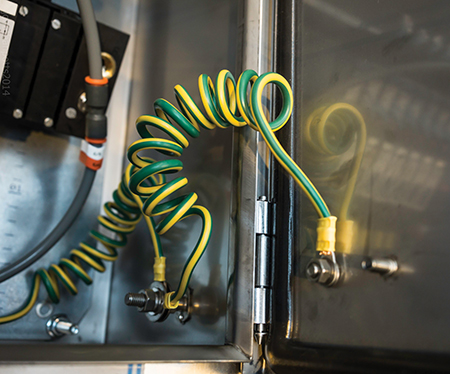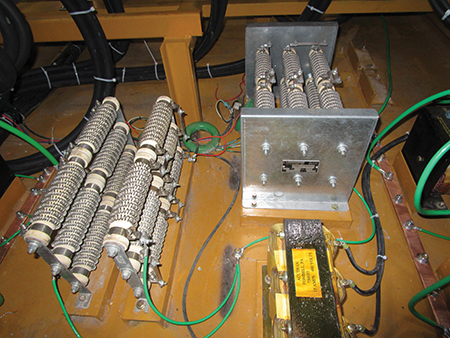In this article, we will discuss the fundamentals of bonding and grounding. To start, we should get an understanding of the difference between bonding and grounding. Bonding can be defined as a low impedance path obtained by permanently joining all non-current-carrying metal parts to ensure electrical continuity and having the capacity to conduct safely any current likely to be imposed on it, and to facilitate the operation of the protective devices in the circuit. Grounding is the installation of a permanent and continuous conductive path from an electrical system to the earth with sufficient ampacity to carry any current liable to be imposed on it, and of a sufficiently low impedance to limit the voltage rise above ground on non-current carrying conductive equipment components. The system referred to in this definition is any new electrical system created in an electrical circuit like the secondary of a transformer, power supply, or another source of power supply such as a generator, etc.
An easy way to remember the difference is: systems are grounded, and equipment is bonded.
In a grounded system, one of the secondary conductors is grounded typically to a grounding electrode using a grounding conductor. The service, feeder or circuit conductor that is grounded is now referred to as the grounded conductor also known as an identified conductor or neutral (where common to more than one phase conductor). In figure 1, note the grounding conductor connecting the system grounded conductor to the grounding electrode.

Now that the system is grounded, the electrical equipment needs to be bonded to the grounded conductor by use of the system bond jumper. The system bond jumper completes the path in the event of a short circuit to an electrical equipment enclosure and, as such, is the most important component in the electrical equipment bond to ground path. In figure 1 note the installation of the system bond jumper from the grounded conductor to the equipment enclosure. In the case of a consumer’s service, the equipment enclosure is the service box certified as service equipment. All connections between electrical enclosures to maintain electrical continuity in the event of a short circuit to an enclosure are considered bonding. The system bond jumper and all the bond conductors installed between electrical enclosures are required to be sized based on Table 16A or 16B of the Canadian Electrical Code Part I (CE Code).
Systems to be grounded
The CE Code requires alternating-current systems rated over 50 V to be grounded if by so doing, their maximum voltage-to-ground does not exceed 150 V, or where the system incorporates a neutral conductor. In addition, circuits of less than 50 V are required to be grounded where supplied by transformers energized from systems of more than 150 volts-to-ground.
The conductor of alternating-current systems to be grounded is as follows:
- in single-phase, 2-wire system; the identified conductor;
- single-phase, 3-wire system; the identified neutral conductor;
- multi-phase systems having one wire common to all phases; the identified neutral conductor; and
- multi-phase systems having one phase grounded; the identified conductor;
Two-wire direct-current systems operating at not more than 300 V or not less than 50 V between conductors are also required to be grounded unless such systems are used for supplying industrial equipment in limited areas and the circuit is equipped with a ground detector.



Can bonding conductor be used as a grounding conductor?
In general CE Code Rule 10-206 does not allow a bonding conductor to be used as a grounding conductor. Subrule (3) of CE Code Rule 10-206 and Clause 4.3.1.10 of CSA Standard C22.2 No 286 Industrial Control Panels, does give one exception by allowing systems of 1000VA or less to be grounded through the equipment bonding.
Equipment with secondary systems greater than 1000VA that are mandated to be grounded are required be grounded to a grounding electrode.

Provisions to ground secondary systems at the original equipment manufacturer’s facility
Where the connection to a grounding electrode cannot be made until after the equipment is shipped and installed, the grounding conductor shall be connected to a designated grounding tie point with provisions for field connection to the grounding electrode.
The designated grounding tie point should be located as near as practicable to the equipment supply connections, and the following caution notice or equivalent wording is required by CSA Standard C22.2 No 286 Industrial Control Panels Clause 5.12 to be installed adjacent to the designated grounding tie point.
WARNING THE SECONDARY SYSTEM(S) MUST BE CONNECTED TO A GROUNDING ELECTRODE IN COMPLIANCE WITH THE CE CODE PART I and AVERTISSEMENT LE SYSTÈME SECONDAIRE DOIT ÊTRE RELIÉ À UNE PRISE DE TERRE CONFORMÉMENT AU CCÉ, PREMIÈRE PARTIE,
In addition to the caution notice, documentation provided to the end user is required to contain instruction for the end user to install a grounding conductor to the designated grounding tie point in accordance with the CE Code Part I.











Find Us on Socials